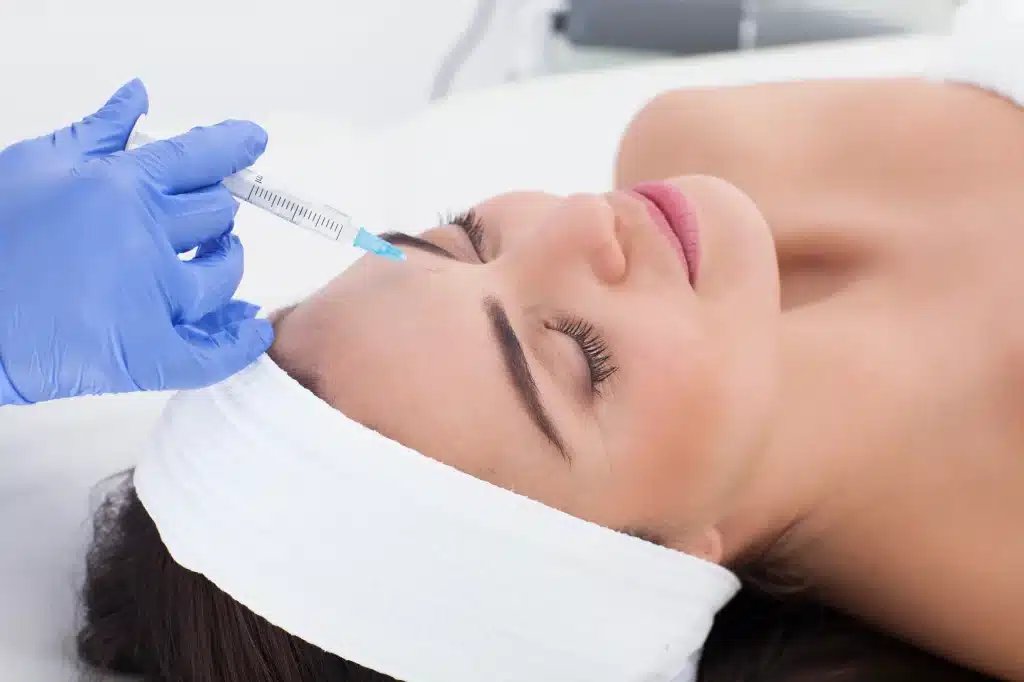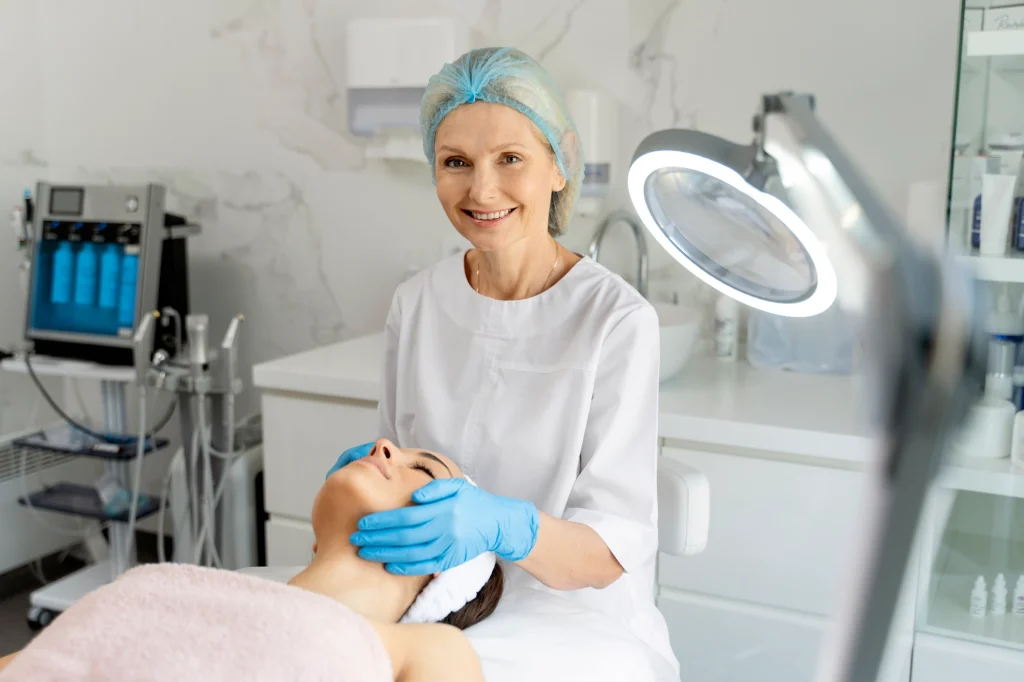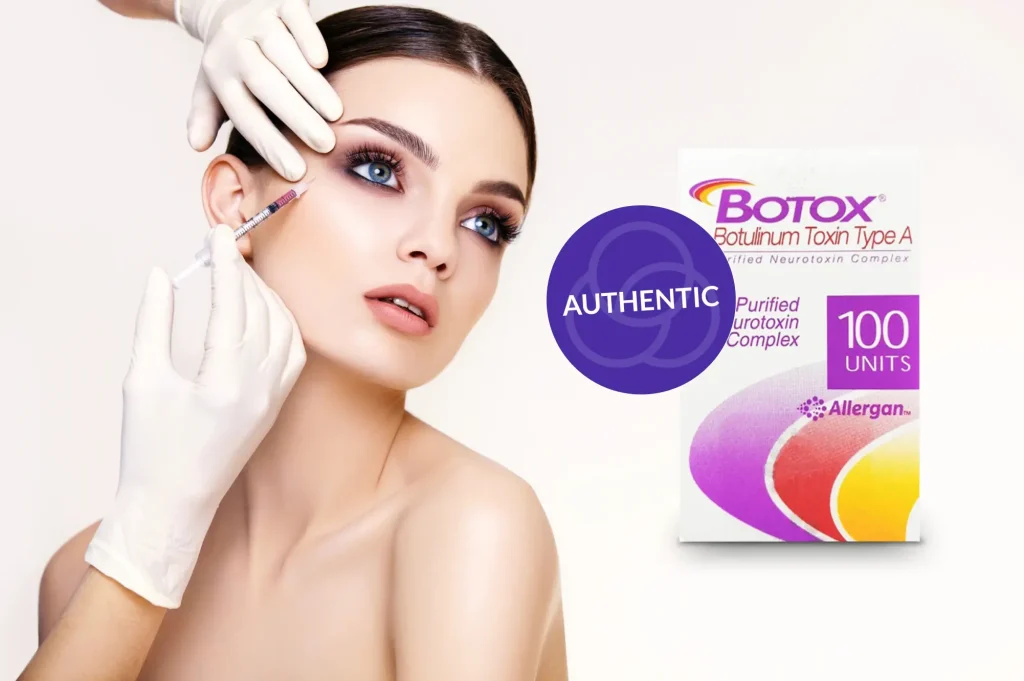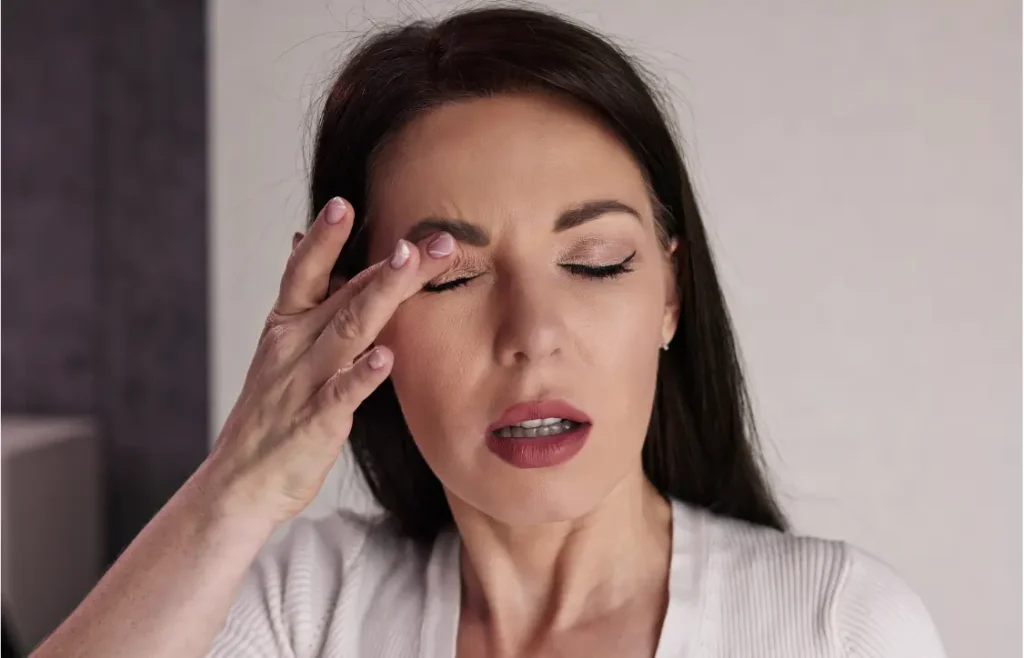Skin quality represents a complex interplay of multiple factors that contribute to the overall appearance and health of the skin. As dermatology and aesthetic medicine advance, the need for standardized assessment tools becomes increasingly important.
The Skin Quality Assessment Scale (SQS) provides medical professionals with a comprehensive framework to evaluate, track, and improve patient outcomes. Unlike subjective visual assessments, this scale offers quantifiable parameters that enable evidence-based treatment planning and objectively measurable improvements in skin quality.
Visit the Medical Spa Rx to explore our full suite of treatment resources.
Key Takeaways
- The Skin Quality Assessment Scale (SQS) is a validated tool developed by ten global experts to objectively measure skin quality
- SQS evaluates six key parameters: hydration, elasticity, redness, pigmentation, sebum, and texture
- Using a standardized assessment allows for personalized treatment plans and quantifiable progress tracking
- SQS helps manage patient expectations and facilitates communication between providers and patients
- Multiple evidence-based treatments can address specific skin quality concerns identified through SQS
Understanding Skin Quality Parameters
Achieving optimal skin quality improvement requires a thorough understanding of the multifaceted nature of skin health. The SQS methodology focuses on six key measurable aspects identified by dermatological experts:
1. Hydration
Proper skin hydration is foundational to skin health and directly impacts barrier function. Using corneometry and specialized impedance devices, clinicians can objectively measure stratum corneum water content. Dehydrated skin typically presents with fine lines, tightness, and dullness. Advanced diagnostic tools enable precise evaluation of hydration levels, establishing baseline measurements for skin quality assessment.
2. Elasticity
Skin elasticity represents the skin’s ability to return to its original position after deformation. Devices such as cutometers measure parameters like maximum extension and retraction time. Diminished elasticity manifests as sagging and contributes significantly to perceived aging. Elasticity decline typically accelerates after age 40 due to collagen and elastin degradation, making this parameter crucial for comprehensive skin quality assessment scale implementation.

3. Redness/Erythema
Vascular components significantly impact skin appearance. Erythema assessment using specialized chromameters and digital photography with color calibration provides objective measurement of this parameter. Chronic inflammation, telangiectasia, and other vascular conditions can be quantified using the appropriate skin quality test instruments, allowing for targeted treatment approaches.
4. Pigmentation
The skin appearance becomes uneven because of three conditions: hyperpigmentation, melasma, and lentigines. Both spectrophotometry and computer-assisted image analysis provide standardized methods for measuring pigmentary changes. Standardized photography, along with comparative analysis through the SQS scale, helps healthcare providers select suitable skin quality treatments by monitoring pigmentation changes over time.
5. Sebum Production
The quantity of sebum produced by the skin determines both its visual quality and its resistance to dermatological diseases, as well as its surface texture. The technology of sebometry helps doctors measure skin surface lipids in an objective manner. The regulation of sebum plays a critical role in maintaining skin barrier health and protects individuals from acne and dryness, thus demonstrating its vital importance in improving skin quality.
6. Texture and Roughness
The evaluation of skin texture includes assessments of pores and microscopic surface features alongside the feel of the skin surface. The combination of profilometry, specialized photography, and 3D imaging allows healthcare professionals to measure surface irregularities objectively. The accurate assessment of skin texture stands as a critical factor for patients who want aesthetic procedures because it guides their skin quality improvement strategies.
Implementing the Skin Quality Assessment Scale
The implementation of the SQS for clinical practice demands a structured method that includes the following steps:
Initial Assessment Protocol
Effective treatment planning requires a complete assessment at its beginning stage. This includes:
- Standardized photographic documentation occurs under controlled lighting environments
- Instrumental measurements using validated devices
- Patient questionnaires regarding subjective concerns
- A thorough medical history needs to include every aspect that can influence skin condition.
The combination of these elements generates a complete understanding of the patient’s current skin quality status. Medical spas in the present era utilize complete assessments as part of their approach to create individualized treatment strategies.
Scoring Methodology
The SQS uses a rating scale from 0 to 4 to evaluate each measured parameter.
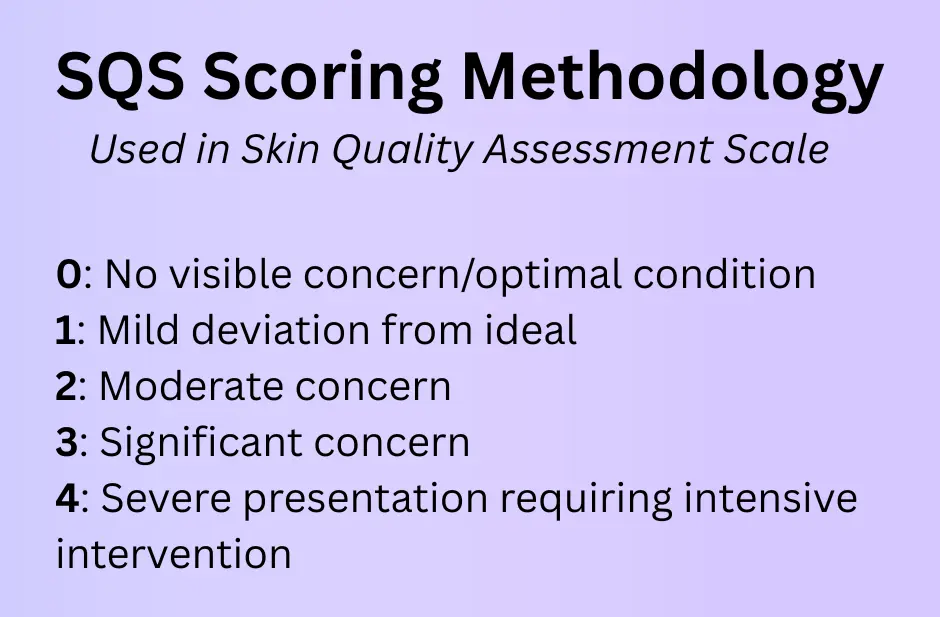
The quantitative method allows for precise tracking, which demonstrates how skin quality treatments perform over time. Standardized settings in clinical photography produce reproducible documentation for both initial assessment and treatment progress monitoring.
Treatment Planning Based on SQS Results
Through its framework, the SQS enables clinicians to choose specific treatments for each patient.
Hydration Deficits:
- Hyaluronic acid-based dermal fillers
- Skin boosters and bio-revitalization techniques
- Customized topical regimens with humectants
Elasticity Concerns:
- Energy-based devices (radiofrequency, ultrasound)
- Collagen-stimulating injectables
- Combination approaches addressing multiple factors
Vascular Irregularities:
- Vascular lasers and intense pulsed light therapy
- Topical vasoconstrictors for maintenance
- Anti-inflammatory protocols for chronic erythema
Pigmentation Issues:
- The appropriate strength of chemical peel matches the skin pigmentation depth.
- Topical tyrosinase inhibitors
- Laser and light-based therapies
Sebum Imbalances:
- Specialized botanical extracts
- Targeted toxins for sebaceous gland modulation
- Advanced skincare regimens
Texture Abnormalities:
- Microneedling with or without radiofrequency
- Fractional resurfacing technologies
- Combination therapy protocols
The combination of these treatment modalities based on specific SQS scores enables a highly personalized approach to improving skin quality.
Advanced Technology in Skin Quality Assessment
Modern technology has revolutionized skin assessment with precise, objective measurement tools. These advancements help detect skin concerns earlier and track treatment results more accurately.
Digital Imaging Systems
Technological advancements have revolutionized skin quality assessment. Multi-spectral imaging systems collect data that extends past visible light wavelengths to show hidden conditions that will develop into clinical manifestations. The sophisticated skin quality scanner technologies reveal multiple assessment indicators, which include:
- Early vascular changes
- Subsurface pigmentation
- Collagen density variations
- Hydration gradients within the epidermis
The detailed examination enables medical teams to provide early prevention and develop precise treatment plans. AI diagnostic systems boost assessment accuracy through database comparisons of patient information.
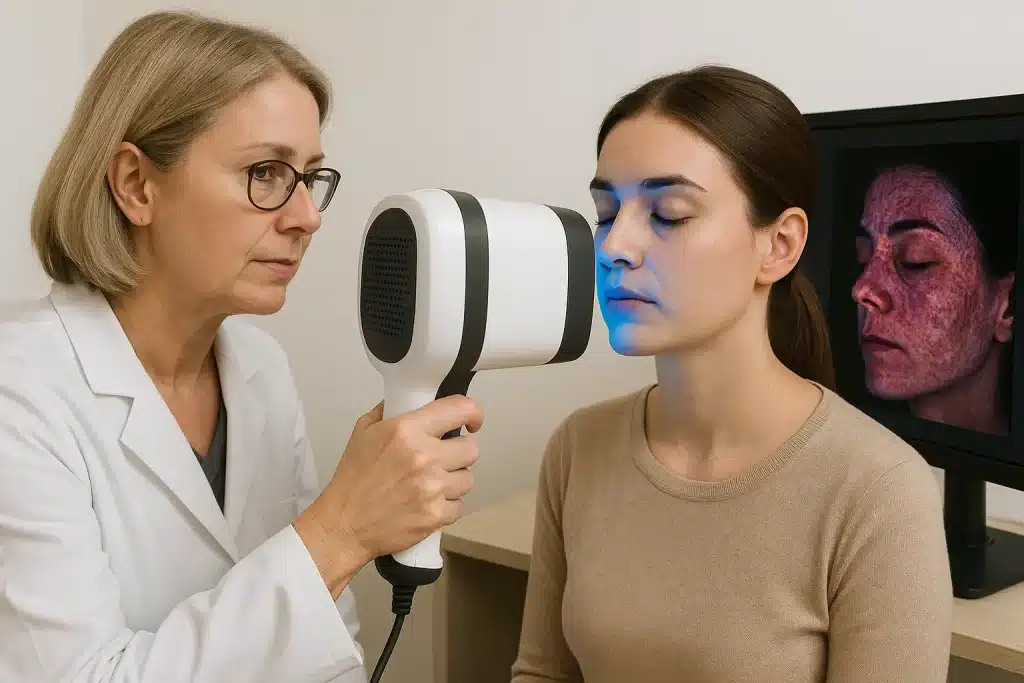
3D Topographical Mapping
Three-dimensional analysis delivers unmatched information about skin microtopographical features. Advanced profilometry enables:
- Quantification of pore dimensions
- Measurement of fine line depth
- Assessment of surface irregularities
- Volumetric analysis of textural concerns
Detailed mapping through this method helps healthcare providers select appropriate treatments while enabling accurate before-and-after assessments for validating skin quality improvement methods.
Tracking Progress and Managing Expectations
Effective implementation of the SQS requires consistent methodology for evaluating improvements and communicating results to patients. Proper documentation and education are essential components of this process.
1. Documentation Protocols
The success of implementing systematic documentation depends on having an effective SQS framework.
- Standardized photography at consistent intervals
- Regular instrumental measurements
- Patient satisfaction questionnaires
- Comparative analysis of objective and subjective improvements
The combined method gives practitioners and patients concrete proof of skin quality parameter improvements.
2. Patient Education
The SQS framework enables clear communication about anticipated results to patients.
- Establishing realistic timelines for improvement
- A detailed explanation of the multiple elements that affect skin quality appears in this section.
- The framework shows how particular treatments relate to quantifiable skin parameters
- The practitioner shows patients their skin improvement progress through visual comparisons.
Educational materials outlining the scientific basis for how to improve skin quality enhance patient understanding and compliance.
3. Long-Term Maintenance Strategies
The SQS functions as a guide for developing maintenance procedures.
- Standardized measures should be used for periodic assessments.
- The treatment approach requires modifications when skin conditions exhibit changes.
- The approach includes personalized home care plans that focus on specific skin parameters.
- The system uses predictive analysis to develop preventative interventions.
The combination of these strategies enables the maintenance of sustainable skin quality improvement throughout multiple time periods.
Clinical Applications and Case Studies
The practical value of the SQS becomes evident through examination of real-world applications in clinical practice. These examples demonstrate how systematic assessment translates to improved patient outcomes.
1. Comprehensive Facial Rejuvenation
The practical usage of SQS emerges through real-life cases that demonstrate its implementation.
Case Example: A 52-year-old woman presents with moderate elasticity problems and minor pigmentation problems and textural abnormalities.
SQS-Guided Approach:
- Initial scoring: Elasticity (3), Pigmentation (2), Texture (2), Hydration (1)
- The treatment sequence includes collagen-stimulating filler first, then IPL for pigmentation, followed by microneedling for texture improvement.
- Re-assessment at 3 months: Elasticity (2), Pigmentation (1), Texture (1), Hydration (0)
- The maintenance treatment plan depends on the observed treatment outcomes.
The systematic method demonstrates how the skin quality assessment scale directs the creation of multiple treatment protocols.
2. Post-Procedural Monitoring
The SQS delivers important metrics that help evaluate patient recovery after procedures.
- The measurement of inflammatory resolution occurs after laser procedures
- Hydration levels need to be monitored after patients receive chemical peels.
- Assessing neocollagenesis after energy-based interventions
- Documenting textural improvements following microneedling
These objective measurements validate procedure efficacy and inform the timing of subsequent treatments, optimizing skin quality treatment results.
3. Research Applications
The standardized format of the SQS enables clinical research through its use.
- Comparative studies of treatment modalities
- Evaluation of novel interventions
- Assessment of combination therapy synergies
- Long-term studies of maintenance protocols
Such research continually refines our approach to improving skin quality through evidence-based methodologies.
Conclusion
The Skin Quality Assessment Scale has emerged as a major breakthrough in the field of aesthetic dermatology. The standardized framework enables objective, quantifiable improvement through its standardized evaluation and treatment planning and progress tracking capabilities. Medical professionals who commit to delivering their best patient outcomes can achieve evidence-based results by implementing the SQS methodology in their clinical work.
The skin quality assessment scale represents an essential standard of care that will advance both provider-patient communication and patient expectation setting and skin quality advancement in aesthetic medicine.
FAQ
What is the proper frequency for conducting Skin Quality Assessment Scale evaluations?
The first baseline assessment needs to be followed by additional evaluations that should occur at 4-6 week intervals when patients receive active treatment. The Skin Quality Assessment Scale requires monitoring every 3-6 months for stability assessment after the maintenance phase begins.
Can the Skin Quality Assessment Scale effectively evaluate different types of skin?
The SQS demonstrates valid performance for assessing all Fitzpatrick skin types. The assessment of pigmentation and erythema in very dark skin tones might need specific calibration modifications in certain measurement approaches.
How should SQS findings be incorporated into patient consultations?
Visual presentations of SQS outcomes should accompany explanations linking each parameter to patient-centered issues. The treatment recommendations must address specific deficits through plans that consider severity scores to determine realistic improvement timelines.
References
- Martschin C, Bahhady R, Li J, et al. Development and validation of a novel holistic Skin Quality Assessment Scale. J Cosmet Dermatol. 2025;24(1):e16615. doi:10.1111/jocd.16615 https://onlinelibrary.wiley.com/doi/10.1111/jocd.16615
- Narurkar VA, Fabi SG, Bucay VW, et al. Rejuvenating hydrator: restoring epidermal hyaluronic acid homeostasis with instant benefits. J Drugs Dermatol. 2016;15(1 Suppl 2):s24–s37. https://pubmed.ncbi.nlm.nih.gov/26741392/



